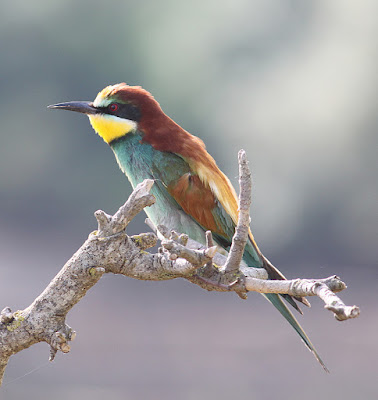I didn’t venture far but stuck to Pilling with a wander around Fluke Hall. I hoped for a few newly arrived birds and a chance to check out the resident nesting species.
Hardly anyone walks along the road that cuts through the trees at Fluke Hall. In the early morning there’s just a procession of cars loaded with dogs. Buy a dog and get fit. But first you have to load the animals into a vehicle and then transport them miles from your home to take part in the walk, preferably with dozens of similarly minded people. And then at the end you load the dogs up again and drive back home? Is it me?
In between the noise of vehicles rushing past me the bird song and random calls returned, but finding a small bird in the now burgeoning spring growth is a difficult business. It’s when a birder’s trained ears become the first weapon of choice and binoculars an afterthought. Of summer migrants I located Chiffchaffs, Willow Warblers and Blackcaps, at least three each of the first two and a single only of the latter.
There were Goldfinch a plenty, Blackbird galore, the chatter of Tree Sparrows, the drumming and “chick” calls of Great-spotted Woodpeckers, and even the rarity of a singing Greenfinch to enjoy. Rarer still I spotted a pair of Treecreepers moving though the higher branches. The species is now so locally scarce that seeing one is something of an occasion.
The everyday stuff of Blue and Great Tits, Dunnocks, Robins, Wrens and Starlings added to the woodland feast. Wood Pigeons clattered from the trees when I walked past their resting places as a pair of the less boisterous and much shyer Stock Doves flew silently from the canopy. Crows alerted me to a male Sparrowhawk which circled above before the crows won the day and the hawk retreated to cover.
A Starling dried out in the sun after a bath while singing and wing-flicking to his mate. Although superficially the same at this time of the year, a close up view of each sex will show that a male has a blue base to the bill, whereas the opposite sex prefers a feminine shade of pink.
A good selection of species then, and a pleasant hour or two of birding, but more than one species was missing. There was no sight or sound of Song Thrush or Mistle Thrush, an absence of Kestrels near their regular nest box, no mewing from overhead Buzzards and few birds newly arrived. And where are the Goldcrests this spring?
Such is the incentive and ultimate reward for knowing and learning one site over many years rather than dashing here, there and everywhere in pursuit of “message birds”.
Along the marsh I found a Curlew and a Whimbrel close to each other, two species which are sometimes confused by inexperienced birdwatchers, perhaps because it is not always easy to make a side by side comparison. The Curlew is the bigger of the two, with a body size which rivals that of a large Gull, whereas a Whimbrel is closer to the size of a Black-headed Gull, but if they’re not standing next to each other there is no direct comparison.
The Whimbrel Numenius phaeopus and the Curlew Numenius arquata are close relations in the large family of Scolopacidae - waders or shorebirds. The family includes many species called sandpipers, as well as those called by names such as curlew and snipe or ”shank”, although there is but a single whimbrel. The majority of these species eat small invertebrates picked from the mud or soil. Different lengths of bill enable different species to feed in the same habitat, particularly on the coast, without direct competition for food.
Inland of the marsh were dashing Skylarks, displaying Lapwings, Redshank and Oystercatcher, a Reed Bunting, a pair of Pied Wagtails, a Wheatear and a Whinchat.
There was nearly a sticky end for the Whinchat when a male Sparrowhawk appeared from nowhere, flew low and fast, slowed montarily and then stretched out a talon to grab the chat. The Whinchat spotted the hawk at the very last second and dropped out of view.
Phew, that was a close call.
Did everyone "click the pics" for better views of the birds? No problem, just head back and start all over.








































































.jpg)













